Install the Reporting Server on the Same Server as the Microsoft SQL Server
Figure 9 shows a deployment that has SQL Server and Reporting Services on the same machine.

Pro
Simple deployment.
The reporting server is the same server as the SQL server.
You can use a service account or Kerberos authentication to get user-specific data.
If the SQL server is clustered, Reporting Services can be load balanced.
Con
The installation steps are as follows:
1. | Log in to the SQL server.
|
2. | Navigate to the Microsoft SQL installation setup.
|
3. | Launch setup.
|
4. | Click Next to install the prerequisites.
|
5. | Click Next on the Welcome screen.
|
6. | Click Next on the Prerequisite Check.
If IIS and ASP.NET are not installed/configured on the server,
cancel the setup and configure IIS and ASP.NET using the application
server role, and then restart the setup.
|
7. | Enter the product key and click Next.
|
8. | On the Components to Install screen, select the following components:
SQL Server Database Services Workstation components, Books Online, and development tools (recommended)
|
9. | Click Advanced.
|
10. | On
the Documentation, Samples, and Sample Databases screen, deselect
Sample Databases and Sample Code and Applications (recommended).
|
11. | Click Next.
|
12. | On
the Instance Name screen, you can specify an instance name for
Reporting Services and database engine. If you want to install it on the
default instance instead, select Default Instance (MSSQLSERVER).
|
13. | On the Service Account screen, do the following:
Specify a domain user account.
|
14. | Start SQL Agent as Automatic Startup.
|
15. | Click Next.
|
16. | Specify Windows Authentication on the Authentication Mode screen (recommended).
|
17. | Click Next.
|
18. | Select the appropriate collation. If unsure, use default values.
|
19. | Click Next.
|
20. | On the Report Server Installation Options screen, select Install the Default Configuration.
|
21. | Click Next to begin installation.
|
The following configuration steps are required only if you did not configure at the time of installation:
1. | Click Start.
|
2. | Click Microsoft SQL Server 2005.
|
3. | Click Configuration Tools.
|
4. | Click Reporting Services Configuration.
|
5. | Start Reporting Services (if not started already; see Figure 10).
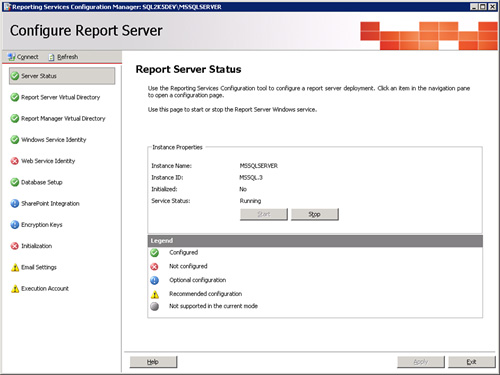
|
6. | Create a virtual directory (by default, ReportServer), as shown in Figure 11.
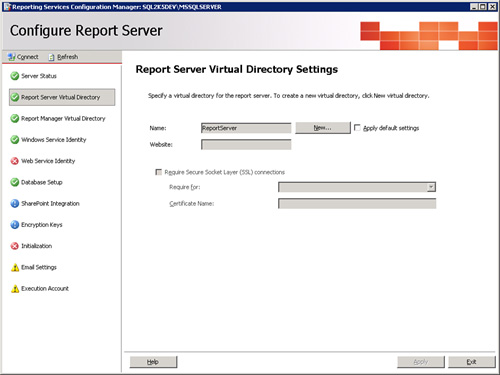
|
7. | Create a virtual directory for report storage (by default, Reports), shown in Figure 12.
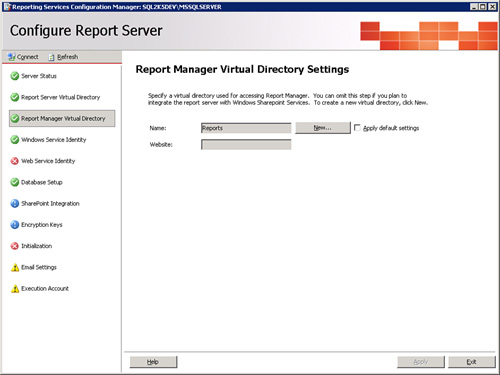
|
8. | Select the appropriate identity (as chosen in the earlier steps), see Figure 13.
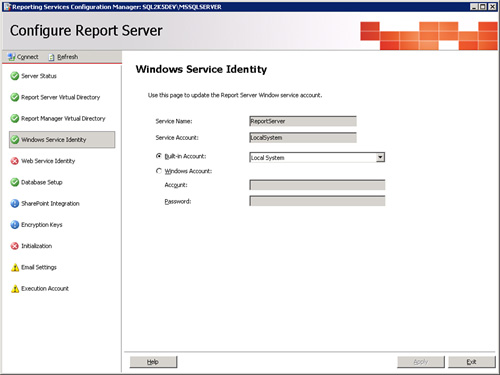
|
9. | Confirm the web service identity (Figure 14)
and the service accounts running the application. This needs to be
either a service account accessing the data source or Kerberos
authentication needs to be enabled.
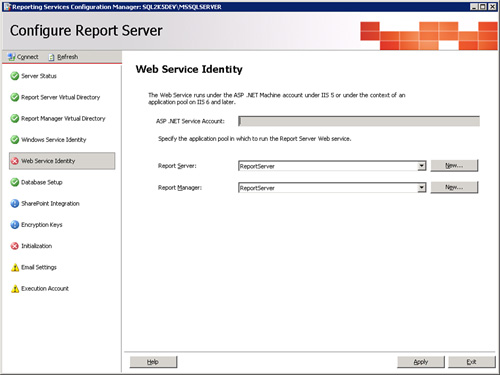
|
10. | Select the database location of the report server, as shown in Figure 15. This is a required configuration for running the service in a load-balanced environment.
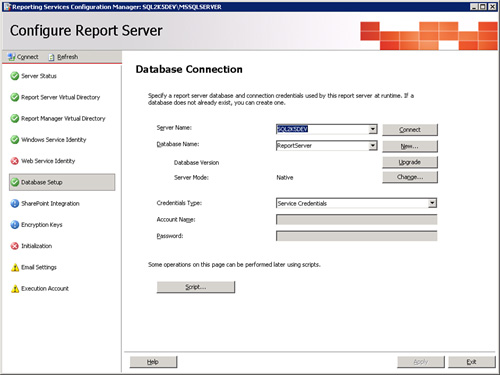
|
11. | On the Initialization screen, select Initialize the Reporting Server.
|
The verification steps are as follows:
1. | Before beginning the configuration, verify whether the following services are running:
|
2. | Navigate
to http://localhost/reports or https://localhost/reports (if you
enabled SSL on your server). You should see the Report Manager home
page. |